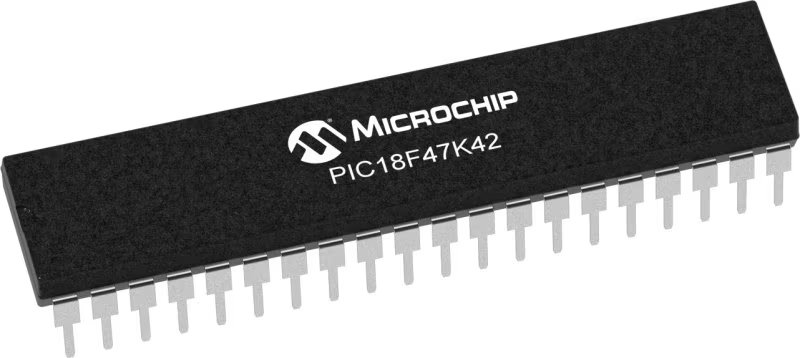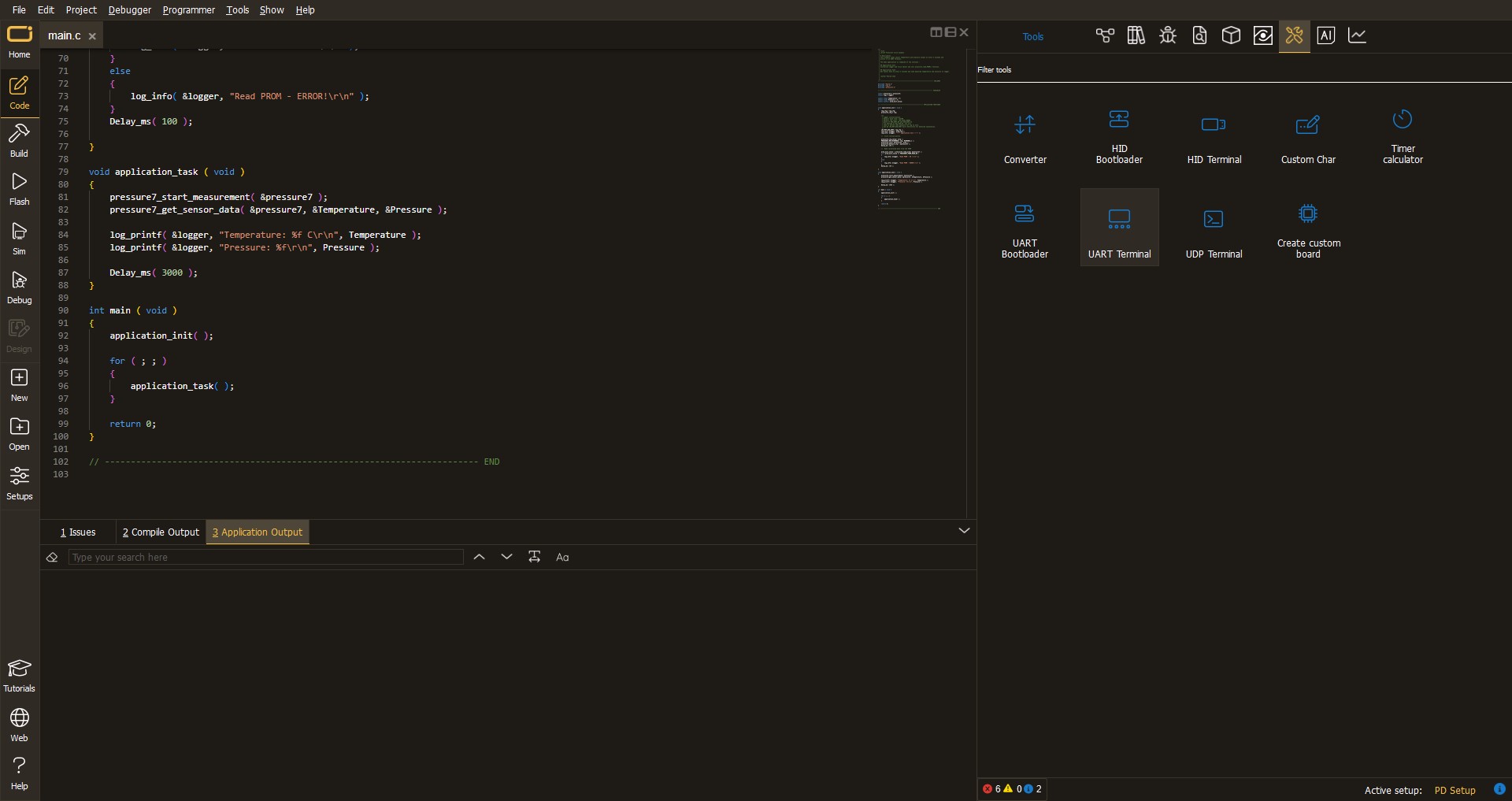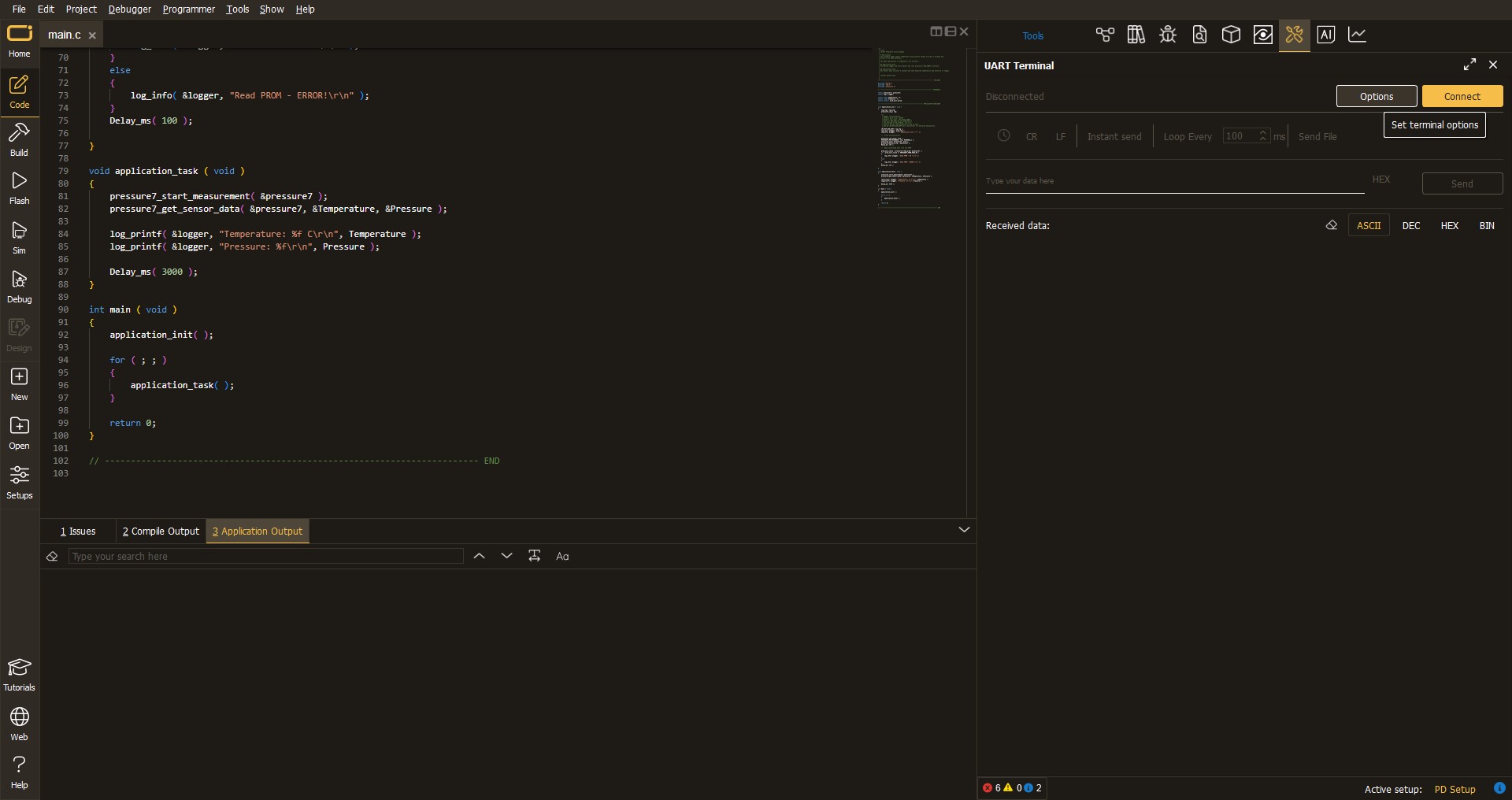Empower your application with a distinctive node identity using our solution, offering a seamless and standardized method to assign a unique MAC address for optimized network communication and management
A
A
Hardware Overview
How does it work?
MAC Address Click is based on the 24AA025E64, a 2Kb Serial EEPROM with a pre-programmed IEEE EUI-64 MAC address from Microchip. The device is organized as two blocks of 128 x 8-bit memory with a 2-wire serial interface. Low voltage design permits operation down to 1.7V, with maximum standby and active currents of only 1uA and 1mA, respectively. The 24AA025E64 also has a page write capability for up to sixteen bytes of data.
MAC Address Click provides a unique node address for your application. It also has 1Kbit of writable EEPROM memory. MAC Address click carries the 24AA025E64 2K I2C Serial EEPROM with EUI-64™ node identity. The click is designed to run on either 3.3V or 5V power supply. MAC Address click communicates with the target microcontroller over the I2C interface. This Click board™ can operate with either 3.3V or 5V logic
voltage levels selected via the PWR SEL jumper. This way, both 3.3V and 5V capable MCUs can use the communication lines properly. Also, this Click board™ comes equipped with a library containing easy-to-use functions and an example code that can be used, as a reference, for further development.
Features overview
Development board
EasyPIC v8 is a development board specially designed for the needs of rapid development of embedded applications. It supports many high pin count 8-bit PIC microcontrollers from Microchip, regardless of their number of pins, and a broad set of unique functions, such as the first-ever embedded debugger/programmer. The development board is well organized and designed so that the end-user has all the necessary elements, such as switches, buttons, indicators, connectors, and others, in one place. Thanks to innovative manufacturing technology, EasyPIC v8 provides a fluid and immersive working experience, allowing access anywhere and under any
circumstances at any time. Each part of the EasyPIC v8 development board contains the components necessary for the most efficient operation of the same board. In addition to the advanced integrated CODEGRIP programmer/debugger module, which offers many valuable programming/debugging options and seamless integration with the Mikroe software environment, the board also includes a clean and regulated power supply module for the development board. It can use a wide range of external power sources, including a battery, an external 12V power supply, and a power source via the USB Type-C (USB-C) connector.
Communication options such as USB-UART, USB DEVICE, and CAN are also included, including the well-established mikroBUS™ standard, two display options (graphical and character-based LCD), and several different DIP sockets. These sockets cover a wide range of 8-bit PIC MCUs, from the smallest PIC MCU devices with only eight up to forty pins. EasyPIC v8 is an integral part of the Mikroe ecosystem for rapid development. Natively supported by Mikroe software tools, it covers many aspects of prototyping and development thanks to a considerable number of different Click boards™ (over a thousand boards), the number of which is growing every day.
Microcontroller Overview
MCU Card / MCU

Architecture
PIC
MCU Memory (KB)
128
Silicon Vendor
Microchip
Pin count
40
RAM (Bytes)
8192
Used MCU Pins
mikroBUS™ mapper
Take a closer look
Schematic

Step by step
Project assembly
Track your results in real time
Application Output
After pressing the "FLASH" button on the left-side panel, it is necessary to open the UART terminal to display the achieved results. By clicking on the Tools icon in the right-hand panel, multiple different functions are displayed, among which is the UART Terminal. Click on the offered "UART Terminal" icon.

Once the UART terminal is opened, the window takes on a new form. At the top of the tab are two buttons, one for adjusting the parameters of the UART terminal and the other for connecting the UART terminal. The tab's lower part is reserved for displaying the achieved results. Before connecting, the terminal has a Disconnected status, indicating that the terminal is not yet active. Before connecting, it is necessary to check the set parameters of the UART terminal. Click on the "OPTIONS" button.

In the newly opened UART Terminal Options field, we check if the terminal settings are correct, such as the set port and the Baud rate of UART communication. If the data is not displayed properly, it is possible that the Baud rate value is not set correctly and needs to be adjusted to 115200. If all the parameters are set correctly, click on "CONFIGURE".

The next step is to click on the "CONNECT" button, after which the terminal status changes from Disconnected to Connected in green, and the data is displayed in the Received data field.

Software Support
Library Description
This library contains API for MAC Address Click driver.
Key functions:
macaddress_get_mac- Generic read mac address functionmacaddress_read_byte- Generic read the byte of data function
Open Source
Code example
This example can be found in NECTO Studio. Feel free to download the code, or you can copy the code below.
/*!
* \file
* \brief MacAddress Click example
*
* # Description
* Provides a unique node address for your application.
*
* The application is composed of two sections :
*
* ## Application Init
* Initialization driver enables - I2C, also write log.
*
* ## Application Task - (code snippet) This is an example which demonstrates the use of MAC Address click board.
* MAC Address click communicates with register via I2C protocol by the write to register and read from the register.
* This example shows write/read single byte and sequential write/read from EEPROM.
* Results are being sent to the Usart Terminal where you can track their changes.
* All data logs write on USB uart changes for every 1 sec.
*
*
* \author MikroE Team
*
*/
// ------------------------------------------------------------------- INCLUDES
#include "board.h"
#include "log.h"
#include "macaddress.h"
// ------------------------------------------------------------------ VARIABLES
static macaddress_t macaddress;
static log_t logger;
static uint8_t *write_data[ 3 ] = { "MikroE", "MAC Address", "MikroElektronika" };
static uint8_t data_len[ 3 ] = { 6 , 11, 16 };
static uint8_t mac_addr[ 8 ] = { 0 };
static uint8_t data_cnt;
static uint8_t read_buff[ 50 ] = { 0 };
static uint8_t address = 0x10;
// ------------------------------------------------------ APPLICATION FUNCTIONS
void application_init ( void )
{
log_cfg_t log_cfg;
macaddress_cfg_t cfg;
/**
* Logger initialization.
* Default baud rate: 115200
* Default log level: LOG_LEVEL_DEBUG
* @note If USB_UART_RX and USB_UART_TX
* are defined as HAL_PIN_NC, you will
* need to define them manually for log to work.
* See @b LOG_MAP_USB_UART macro definition for detailed explanation.
*/
LOG_MAP_USB_UART( log_cfg );
log_init( &logger, &log_cfg );
log_info( &logger, "---- Application Init ----" );
// Click initialization.
macaddress_cfg_setup( &cfg );
MACADDRESS_MAP_MIKROBUS( cfg, MIKROBUS_1 );
macaddress_init( &macaddress, &cfg );
macaddress_get_mac( &macaddress, mac_addr );
log_printf( &logger, " > MAC Address: 0x" );
for ( uint8_t cnt = 0; cnt < 8; cnt++ )
{
log_printf( &logger, "%.02X", (uint16_t)mac_addr[ cnt ] );
}
log_printf( &logger, "\r\n" );
Delay_ms( 1000 );
log_info( &logger, "---- Application Task ----" );
data_cnt = 0;
}
void application_task ( void )
{
log_printf( &logger, " > Writing data to memory...\r\n" );
Delay_ms( 100 );
macaddress_generic_write( &macaddress, address, write_data[ data_cnt ], data_len[ data_cnt ] );
log_printf( &logger, " > Writing done.\r\n" );
Delay_ms( 1000 );
log_printf( &logger, " > Reading data from memory...\r\n" );
macaddress_generic_read( &macaddress, address, read_buff, data_len[ data_cnt ] );
Delay_ms( 100 );
log_printf( &logger, " > Read data: " );
for( uint8_t cnt = 0; cnt < data_len[ data_cnt ]; cnt++ )
{
log_printf( &logger, "%c", read_buff[ cnt ] );
}
log_printf( &logger, "\r\n" );
Delay_ms( 100 );
log_printf( &logger, " > Reading done.\r\n" );
log_printf( &logger, "---------------------------------\r\n" );
data_cnt++;
if ( data_cnt >= 3 )
data_cnt = 0;
Delay_ms( 3000 );
}
void main ( void )
{
application_init( );
for ( ; ; )
{
application_task( );
}
}
// ------------------------------------------------------------------------ END


































